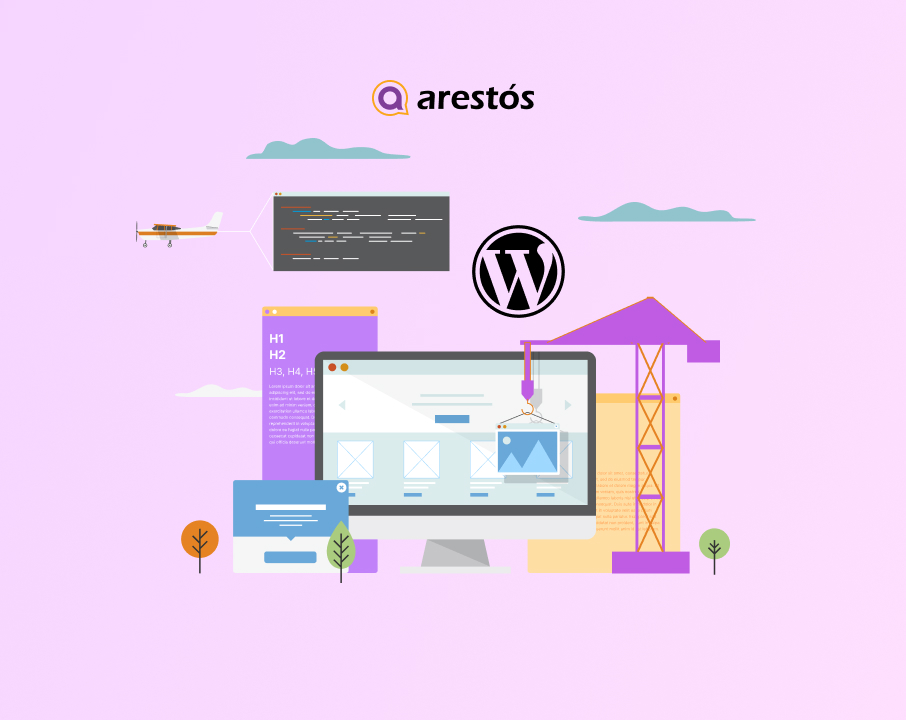A Step-by-Step Guide: How to Build a WordPress Website from Scratch
In today's digital age, having a website is essential for businesses, bloggers, and individuals looking to establish their online presence. WordPress, a popular content management system, offers a user-friendly platform for building professional websites.
In today’s digital age, having a website is essential for businesses, bloggers, and individuals looking to establish their online presence. WordPress, a popular content management system, offers a user-friendly platform for building professional websites. In this step-by-step guide, we will walk you through the process of building a WordPress website from scratch. By the end, you’ll have the knowledge and confidence to create your own stunning website.
Step 1: How to build a WordPress website from scratch requires planning
Planning is a crucial first step in building a successful WordPress website. Start by defining the purpose and goals of your website. Consider whether you want to create a personal blog, an e-commerce store, or a business website. Next, identify your target audience and their demographics, interests, and pain points. This understanding will help you tailor your website to their needs.
Sketching out the site structure and navigation is essential for a user-friendly experience. Create a visual sitemap that outlines how different pages and sections connect. Plan your content strategy, including the types of content you’ll create and the topics you’ll cover. Finally, consider your branding and design elements to ensure a cohesive and visually appealing website. Taking the time to plan will set a solid foundation for your WordPress website.
Step 2: Setting Up WordPress
Setting up WordPress involves selecting a hosting provider, choosing a domain name, and installing WordPress on your hosting account. Choose a reliable hosting provider and register a domain name that represents your brand. Install WordPress using the one-click installation process provided by your hosting provider. Configure basic settings and choose a theme that suits your website’s design. Customize the theme to align with your branding. With these steps completed, you’re ready to move on to the next section and further customize your WordPress website.
Step 3: Selecting and Installing a Theme
Selecting the right theme is essential for your WordPress website’s visual appeal and functionality. Research and explore theme options, considering factors such as design, responsiveness, and features. Check for theme compatibility with the latest version of WordPress and popular plugins. Preview themes through live demos to assess their layout and customization options. Review theme documentation and support resources. Purchase or install your chosen theme, then activate and customize it to align with your branding. By following these steps, you’ll have a visually appealing WordPress website that suits your needs.
Step 4: Customizing Your Website
Customizing your website is key to creating a unique and engaging online presence. Use the WordPress Customizer to modify the appearance of your site, including colors, fonts, and backgrounds. Create and customize menus for easy navigation. Install and activate plugins to add functionality, such as contact forms or social media integration. Customize widgets for specific content areas. Utilize page templates for different layouts. Add and format content using the Gutenberg editor or page builders. These customization options will help tailor your website to your brand and goals.
Step 5: The next step in build a WordPress website is to add the required plugins
Essential plugins are crucial for enhancing your WordPress website’s performance, security, and user experience. Install a security plugin to protect against malicious attacks and unauthorized access. Use an SEO plugin to optimize your website for better search engine visibility. Improve loading speed with a caching plugin. Set up a backup plugin to safeguard your data. Add a contact form plugin for easy communication with visitors. Integrate social media plugins to increase engagement. Install an analytics plugin to track and analyze website performance. These essential plugins will optimize and enhance your WordPress website.
Step 6: Creating Pages and Blog Posts
With your website’s foundation set, it’s time to create content. Understand the difference between pages and blog posts and start creating them. Use the intuitive WordPress editor to format your content, add images, and embed videos. Don’t forget to optimize your content with relevant keywords and meta tags for better search engine visibility.
Step 7: The next step when buil a WordPress website requires Optimization for SEO
Optimizing your WordPress website for SEO is crucial for better search engine visibility and increased organic traffic. Here are some key strategies to optimize your website effectively:
- Conduct thorough keyword research to identify relevant and high-ranking keywords for your content.
- Optimize on-page elements like titles, meta descriptions, headers, URLs, and image alt tags with relevant keywords.
- Create high-quality, informative, and engaging content that addresses user search intent and regularly publish fresh content.
- Ensure your website is mobile-friendly and offers a seamless user experience on different devices.
- Improve your website’s loading speed by using caching plugins, optimizing images, and minimizing CSS and JavaScript files.
- Build high-quality backlinks from reputable and relevant websites within your industry.
- Take advantage of SEO plugins like Yoast SEO or All in One SEO Pack to streamline your optimization efforts.
Remember that SEO is an ongoing process, and it takes time to see results. Regularly monitor your website’s performance and make necessary adjustments to your SEO strategy. By implementing these strategies, you can enhance your website’s visibility, attract more organic traffic, and improve your online presence.
Step 8: Enhancing Website Functionality
Enhancing the functionality of your WordPress website is crucial for a better user experience. Here are some key ways to achieve this:
- Install essential plugins for security, caching, SEO, contact forms, social media integration, and analytics.
- Customize themes and templates to align with your branding and design preferences.
- Integrate e-commerce functionality with plugins like WooCommerce for online selling.
- Implement user registration and membership features for exclusive content or community platforms.
- Add advanced forms and surveys using form builder plugins.
- Enable social sharing and social login to encourage engagement and streamline user registration.
- Improve website accessibility by following guidelines and using accessibility plugins.
- Regularly update and maintain your website by updating core, themes, and plugins, performing routine maintenance tasks, and creating backups.
By implementing these strategies, you can enhance your website’s functionality, improve user experience, and achieve your website’s goals effectively.
Step 9: Testing and Launching Your Website
Before launching your WordPress website, it’s important to test it thoroughly for functionality and a smooth user experience. Follow these key steps:
- Perform cross-browser and cross-device testing to ensure your website works well on different platforms.
- Test all links and navigation to ensure they work correctly and provide a seamless browsing experience.
- Verify that all forms, including contact forms, are functioning properly by submitting test entries.
- Review and proofread all content to ensure accuracy and alignment with your branding.
- Test your website’s performance using tools like Google PageSpeed Insights and optimize as needed.
- Set up an SEO plugin and connect your website to analytics platforms for tracking and optimization.
- Create a backup of your website and implement security measures to protect against potential threats.
- Launch your website by updating your domain’s DNS settings and double-checking all configurations.
- Conduct a final check after the launch, testing all functionalities and monitoring traffic and user feedback.
By following these steps, you can ensure a successful launch of your WordPress website with a great user experience.
Conclusion
Congratulations! You have successfully learned how to build a WordPress website from scratch. By following this step-by-step guide, you now possess the knowledge to create a professional and functional website. Remember to regularly update and maintain your website to keep it secure and optimized. With WordPress’s flexibility and the vast array of available plugins, the possibilities for your website are endless. Embrace your newfound skills and start building your online presence today.
Please let us know if you require any additional information. Arestós is always available to assist you in resolving any WordPress issues.



